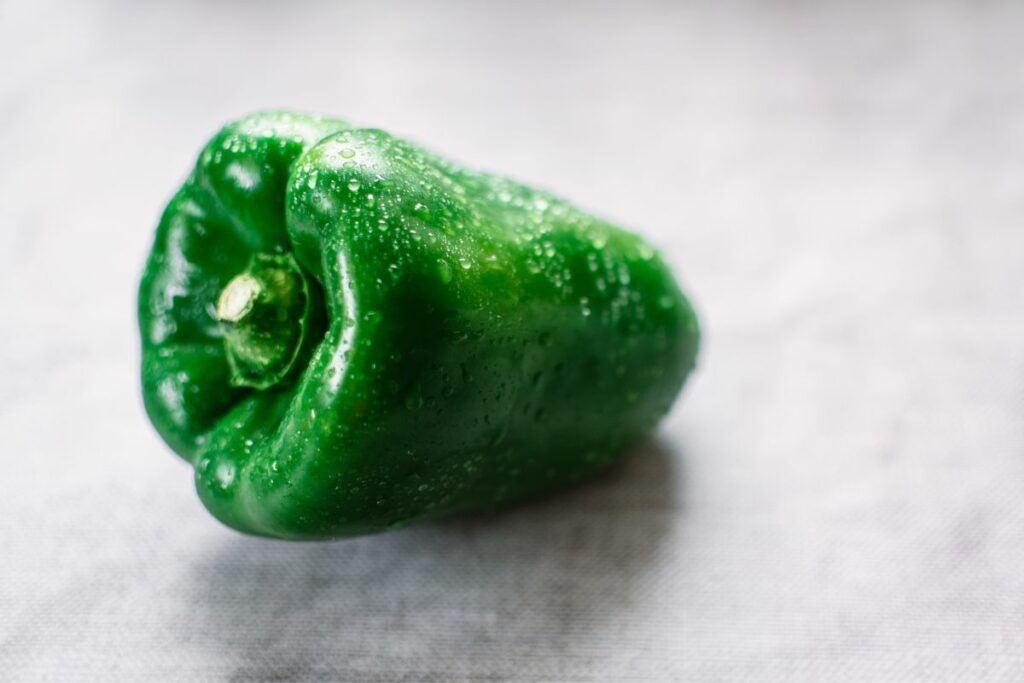Green peppers are a common ingredient in many recipes, adding a distinctive flavor and crunch to dishes. However, if you don’t have green peppers on hand or simply don’t like the taste, there are several substitutes you can use instead. These substitutes can be found in most grocery stores and can help you create delicious meals without sacrificing flavor.
One of the best substitutes for green peppers is other types of bell peppers, such as red, yellow, or orange peppers. These peppers have a similar taste and texture to green peppers but may be slightly sweeter or milder in flavor. They can be used in a variety of recipes, including soups, stir-fries, salads, and omelets.
Another option for a green pepper substitute is poblano peppers. These peppers have a slightly different taste than green peppers, with a rich, earthy flavor that can add depth to your dishes. They are a great option for recipes that call for roasted or grilled green peppers, as they have a similar texture and can be prepared in the same way. Overall, whether you’re looking to switch up your recipes or simply don’t have green peppers on hand, there are several substitutes that can help you create delicious meals.
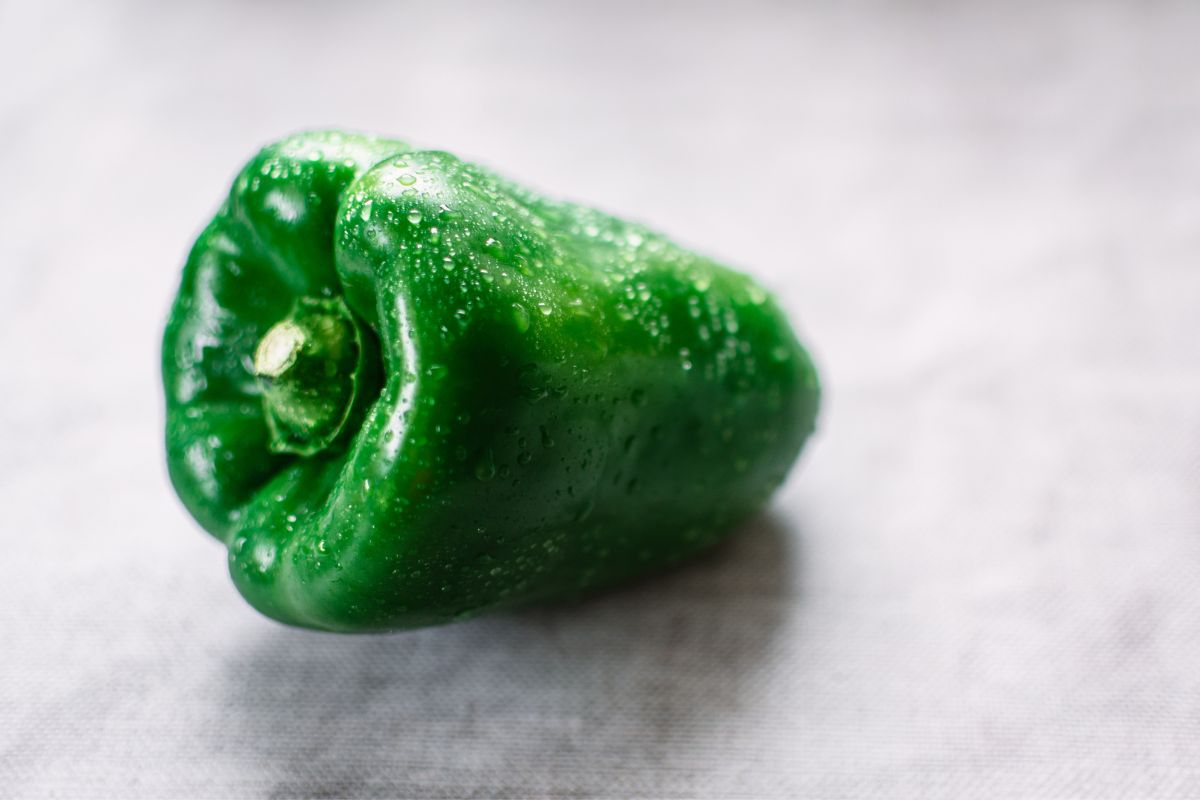
Contents
- 1 Understanding Green Peppers
- 2 Common Green Pepper Substitutes
- 3 Bell Peppers as a Substitute
- 4 Poblano Peppers as a Substitute
- 5 Jalapeno Peppers as a Substitute
- 6 Other Pepper Substitutes
- 7 Non-Pepper Substitutes
- 8 Considerations Based on Recipe
- 9 Choosing the Right Substitute
- 10 Tips for Handling Peppers
Understanding Green Peppers
Green peppers, also known as bell peppers, are a type of vegetable that are widely used in cooking. They are a member of the Capsicum annuum family and are related to other peppers such as jalapenos and cayenne peppers.
Green peppers are known for their mild flavor and crunchy texture, making them a popular ingredient in many dishes. They have thick walls and are available in a variety of sizes, ranging from small to large.
One of the key characteristics of green peppers is their flavor. They have a slightly sweet taste and a mild spiciness, which makes them a versatile ingredient in many recipes. They can be used raw in salads or cooked in stir-fries, stews, and casseroles.
In terms of texture, green peppers are known for their crunchy and juicy flesh. They add a refreshing crunch to dishes and are often used in recipes to add texture and volume.
Green peppers are also known for their thick walls, which make them ideal for stuffing. They can be filled with a variety of ingredients, such as rice, meat, or cheese, and baked until tender and flavorful.
Overall, green peppers are a versatile and flavorful vegetable that can be used in a variety of dishes. Whether you are looking to add crunch, texture, or flavor to your recipe, green peppers are a great choice.
Common Green Pepper Substitutes
Green peppers are a staple ingredient in many recipes, but what if you don’t have any on hand or simply don’t care for their taste? No worries, there are many substitutes available that can replace green peppers in your dish. Here are some of the most common green pepper substitutes:
1. Bell Peppers
Bell peppers are a close relative of green peppers and can be used as a direct substitute in many recipes. They come in a variety of colors, including red, yellow, and orange, and have a sweet and mild flavor. Simply choose the color that best matches the recipe you’re making.
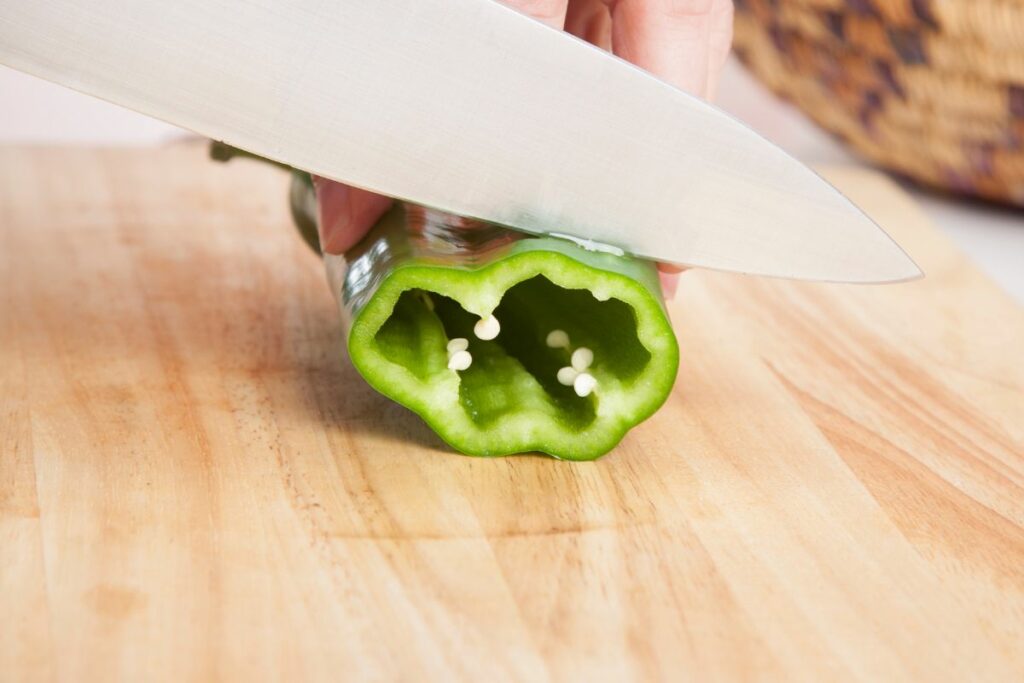
2. Cubanelle Peppers
Cubanelle peppers are another great substitute for green peppers. They have a similar flavor and texture, but are slightly sweeter and milder. Cubanelle peppers are often used in Italian and Spanish cuisine and can be found in most grocery stores.
3. Anaheim Peppers
Anaheim peppers are a mild and slightly sweet pepper that can be used in place of green peppers. They are often used in Mexican cuisine and can be found in most grocery stores. Anaheim peppers are a great choice if you want a milder flavor than green peppers.
4. Poblano Peppers
Poblano peppers are a mild and slightly sweet pepper that is often used in Mexican cuisine. They have a similar flavor and texture to green peppers, but are slightly spicier. Poblano peppers can be found in most grocery stores and are a great choice if you want a little bit of heat in your dish.
5. Jalapenos
Jalapenos are a spicy pepper that can be used in place of green peppers. They have a distinct flavor and are often used in Mexican cuisine. Jalapenos can be found in most grocery stores and are a great choice if you want a spicy kick in your dish.
6. Zucchini
Zucchini is a versatile vegetable that can be used in place of green peppers in many recipes. It has a mild flavor and a similar texture to green peppers. Zucchini is often used in Italian cuisine and can be found in most grocery stores.
7. Green Beans
Green beans are another great substitute for green peppers. They have a mild flavor and a similar texture to green peppers. Green beans are often used in Asian cuisine and can be found in most grocery stores.
There are many other substitutes for green peppers, including celery, carrots, and even broccoli. Experiment with different ingredients to find the perfect substitute for your recipe.

Bell Peppers as a Substitute
Bell peppers are a great substitute for green peppers. They come in a variety of colors, including red, yellow, orange, and purple, and have a sweet taste that is similar to green peppers. They are also a good source of vitamin C, vitamin A, and potassium.
Red bell peppers are sweeter than green peppers and have a slightly fruity taste. They are a good substitute for green peppers in recipes that require a milder flavor. Yellow bell peppers are also a good substitute for green peppers. They have a sweeter taste and are more ripe than green peppers.
Orange bell peppers are another type of bell pepper that can be used as a substitute for green peppers. They have a similar taste to yellow bell peppers but are a bit milder. Purple bell peppers are a less common type of bell pepper but can also be used as a substitute for green peppers.
When using bell peppers as a substitute for green peppers, it is important to note that the color of the pepper can affect the color of the dish. For example, red or yellow bell peppers may make a dish look more colorful than green peppers. It is also important to consider the sweetness of the pepper when using it as a substitute.
Overall, bell peppers are a great substitute for green peppers in recipes that require a milder flavor. They come in a variety of colors and have a sweet taste that can enhance the flavor of many dishes.
Poblano Peppers as a Substitute
Poblano peppers are a great substitute for green peppers due to their mild flavor and earthy taste. They are a type of chili pepper that is commonly used in Mexican cuisine. Poblano peppers are large, dark green, and have a slightly curved shape. They are mild in heat, making them a perfect substitute for green peppers, which are also mild in flavor.
Poblano peppers have a unique flavor that is earthy and slightly sweet, which makes them a great substitute for green peppers. They are also rich in nutrients, including vitamin C, vitamin A, and potassium. Poblano peppers are often used in dishes such as chiles rellenos, where they are stuffed with cheese or meat and then fried.
When using poblano peppers as a substitute for green peppers, keep in mind that they are slightly spicier. If you want to reduce the heat, you can remove the seeds and membranes before using them in your recipe. Poblano peppers also have a thicker skin than green peppers, so you may need to roast or peel them before using them in certain recipes.
Overall, poblano peppers are a great substitute for green peppers due to their mild flavor and earthy taste. They are also rich in nutrients and can be used in a variety of dishes. If you are looking for a substitute for green peppers, consider using poblano peppers in your next recipe.
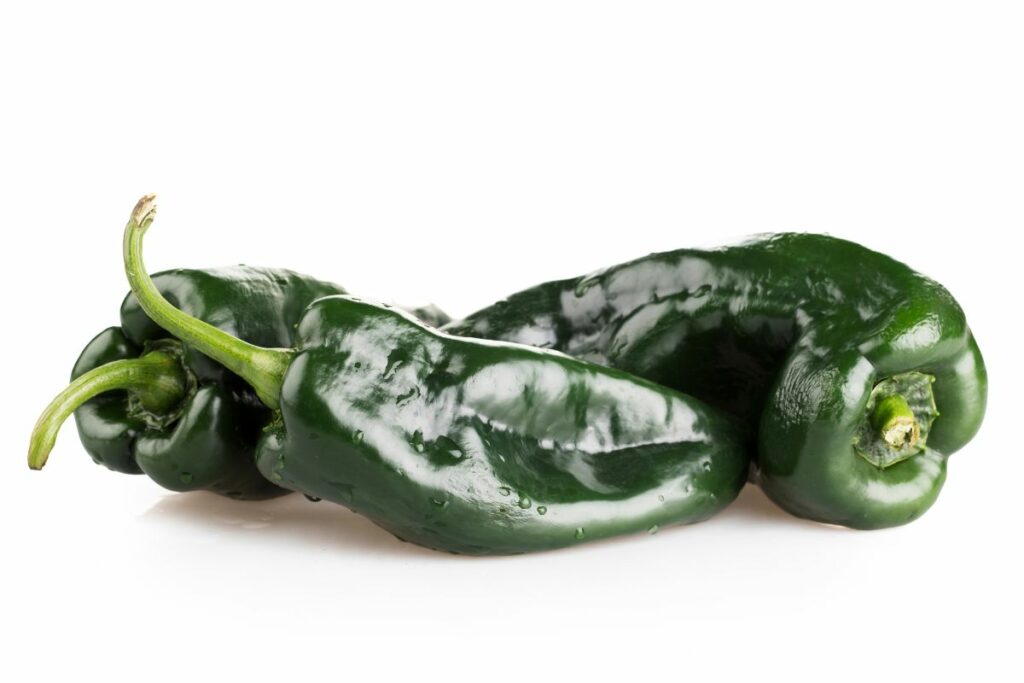
Jalapeno Peppers as a Substitute
Jalapeno peppers are a popular ingredient in many dishes, especially in Mexican cuisine. They add a spicy kick to any recipe, making them a great substitute for green bell peppers.
One of the benefits of using jalapeno peppers as a substitute is their heat level. Jalapenos are spicier than green bell peppers, which means they can add more flavor and depth to a dish. However, it’s important to note that not everyone can handle the heat of jalapenos, so it’s best to use them sparingly or offer a milder alternative for those who prefer less spicy food.
Jalapeno peppers can be used in a variety of dishes, including soups, stews, tacos, and more. They can be diced, sliced, or chopped to fit any recipe’s needs. When using jalapenos as a substitute, it’s important to remember that they have a different flavor profile than green bell peppers. Jalapenos have a slightly sweet and tangy taste, which can complement or contrast with other ingredients in a recipe.
Overall, jalapeno peppers are a great substitute for green bell peppers when you want to add a little extra spice to your dish. Just remember to use them in moderation and offer a milder alternative for those who can’t handle the heat.
Other Pepper Substitutes
If you’re looking for a green pepper substitute, there are plenty of other pepper options to choose from. Here are a few options that you might want to consider:
- Anaheim peppers: These mild peppers are a good substitute for green peppers in most recipes. They have a slightly sweet flavor and can be used in everything from salads to stir-fries.
- Cubanelle peppers: These peppers are similar to Anaheim peppers but have a slightly different shape and a thinner skin. They’re a good substitute for green peppers in recipes that call for a milder pepper.
- Banana peppers: These sweet and tangy peppers are a good substitute for green peppers in salads and sandwiches. They’re also great for pickling.
- Pimiento or pimento peppers: These sweet, red peppers are often used in pimento cheese and other Southern dishes. They can be used as a substitute for green peppers in recipes that call for a sweeter pepper.
- Shishito peppers: These small, mild peppers are often used in Japanese cuisine. They’re a good substitute for green peppers in recipes that call for a mild pepper.
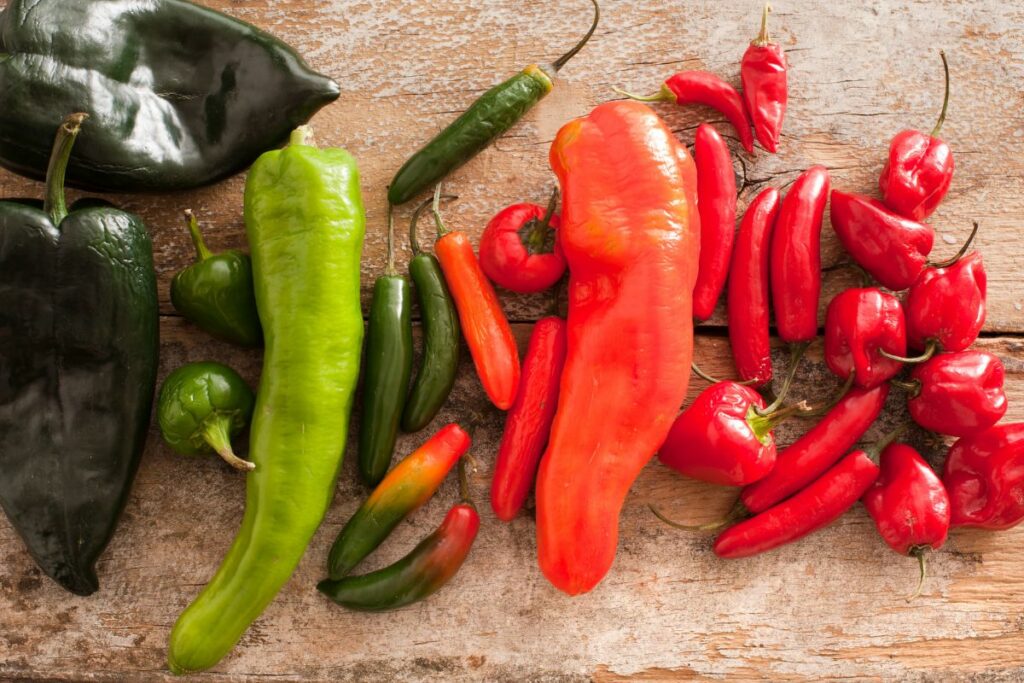
- Cherry peppers: These small, sweet peppers are often used in Italian cuisine. They’re a good substitute for green peppers in recipes that call for a sweeter pepper.
- Pepperoncini: These tangy, slightly spicy peppers are often used in Greek and Italian cuisine. They’re a good substitute for green peppers in recipes that call for a slightly spicy pepper.
- Green chilies: These spicy peppers are often used in Mexican cuisine. They’re a good substitute for green peppers in recipes that call for a spicy pepper.
- Cayenne pepper: This spicy pepper is often used in Cajun and Creole cuisine. It can be used as a substitute for green peppers in recipes that call for a spicy pepper.
When substituting one pepper for another, keep in mind that the flavor and heat level may be slightly different. It’s always a good idea to taste the peppers before using them in a recipe to make sure that they’ll work well as a substitute.
Non-Pepper Substitutes
If you don’t have green peppers on hand or don’t like their taste, there are several non-pepper substitutes you can use in your recipes. Here are some of the best options:
Onions
Onions are a versatile ingredient that can add a sweet or savory flavor to your dish, depending on how you prepare them. They can be sautéed, caramelized, or fried to add depth and complexity to your recipe. Onions work particularly well in stir-fries, soups, stews, and casseroles.
Zucchini
Zucchini is a mild-tasting vegetable that can be used as a substitute for green peppers in many recipes. It has a similar texture and can be sliced, diced, or chopped and added to dishes like fajitas, salads, and pasta sauces. Zucchini is also a great source of fiber, vitamins, and minerals, making it a healthy addition to any meal.
Celery
Celery is another vegetable that can be used as a substitute for green peppers. It has a mild flavor and a crunchy texture that can add a refreshing element to your dish. Celery is often used in soups, stews, and salads, but it can also be sautéed or roasted and used in stir-fries or casseroles.

Fried Onions
Fried onions are a popular ingredient in many Middle Eastern and Indian dishes. They can be used as a substitute for green peppers to add a sweet and savory flavor to your recipe. Fried onions can be found in most grocery stores or can be made at home by slicing onions thinly and frying them until crispy.
Onion
Onion can be used as a substitute for green peppers in many recipes. It has a similar flavor profile and can be sautéed, caramelized, or fried to add depth and complexity to your dish. Onion works particularly well in stir-fries, soups, stews, and casseroles.
When using non-pepper substitutes, keep in mind that they may alter the flavor and texture of your dish. It’s always a good idea to taste test as you cook and adjust seasoning as needed.
Considerations Based on Recipe
When considering a substitute for green peppers, it’s important to take into account the recipe being used. Different dishes will have different flavor profiles and cooking methods, which may affect the choice of substitute.
For example, in salads, raw substitutes like red or yellow bell peppers, cucumbers, or cherry tomatoes can add a similar crunch and fresh flavor to the dish. However, in cooked dishes like stir-fries or casseroles, substitutes like zucchini, eggplant, or mushrooms may be better options as they can withstand higher heat and longer cooking times without losing their texture.
When making sauces or salsas, substitutes like tomatillos or poblano peppers can add a slightly tart or smoky flavor that is similar to green peppers. In pizza or stuffing recipes, substitutes like artichoke hearts or olives can provide a similar briny flavor and texture.
It’s also important to consider the spiciness level of the substitute, especially in dishes like fajitas or hummus where the heat is an important component. Substitutes like jalapeños or serrano peppers can add a similar level of heat to the dish, while substitutes like bell peppers or cherry tomatoes will provide a milder flavor.
Overall, when choosing a substitute for green peppers, it’s important to consider the recipe and choose a substitute that will complement the other ingredients and provide a similar flavor and texture profile.
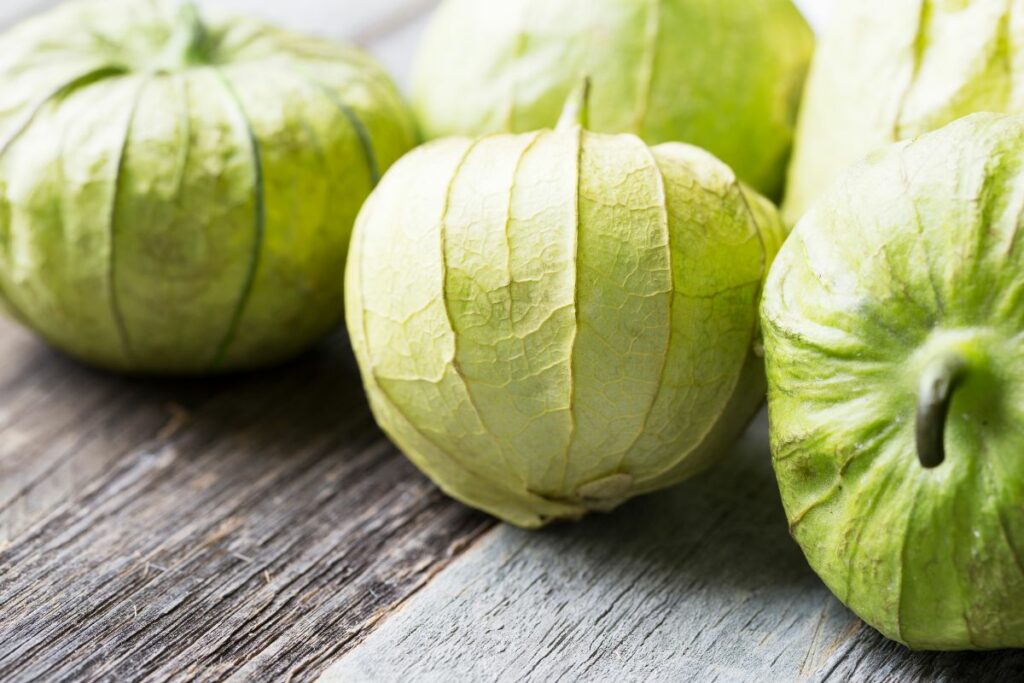
Choosing the Right Substitute
When it comes to choosing a substitute for green peppers, it’s important to consider the flavor profile of the dish and the characteristics of the substitute. Here are some things to keep in mind when selecting the right substitute:
Versatility
Some substitutes, like yellow and orange bell peppers, are versatile and can be used in a wide range of dishes. They have a similar texture to green peppers and can be used raw or cooked.
Sweetness
If you’re looking for a sweeter flavor, red bell peppers are a great substitute for green peppers. They have a slightly sweeter taste and a mild fruity flavor.
Spiciness
For those who enjoy a bit of heat, jalapenos and poblano peppers are good substitutes for green peppers. Jalapenos are hotter than green peppers, while poblano peppers have a smoky flavor and light heat.
Mild Fruity Taste
If you’re looking for a substitute with a mild fruity taste, try using cubanelle peppers. These peppers have a sweet, mild flavor and are often used in Italian and Spanish cooking.
Smoky Flavor
If you’re looking for a substitute with a smoky flavor, try using chipotle peppers. These peppers are made from smoked jalapenos and have a distinct smoky flavor that can add depth to dishes.
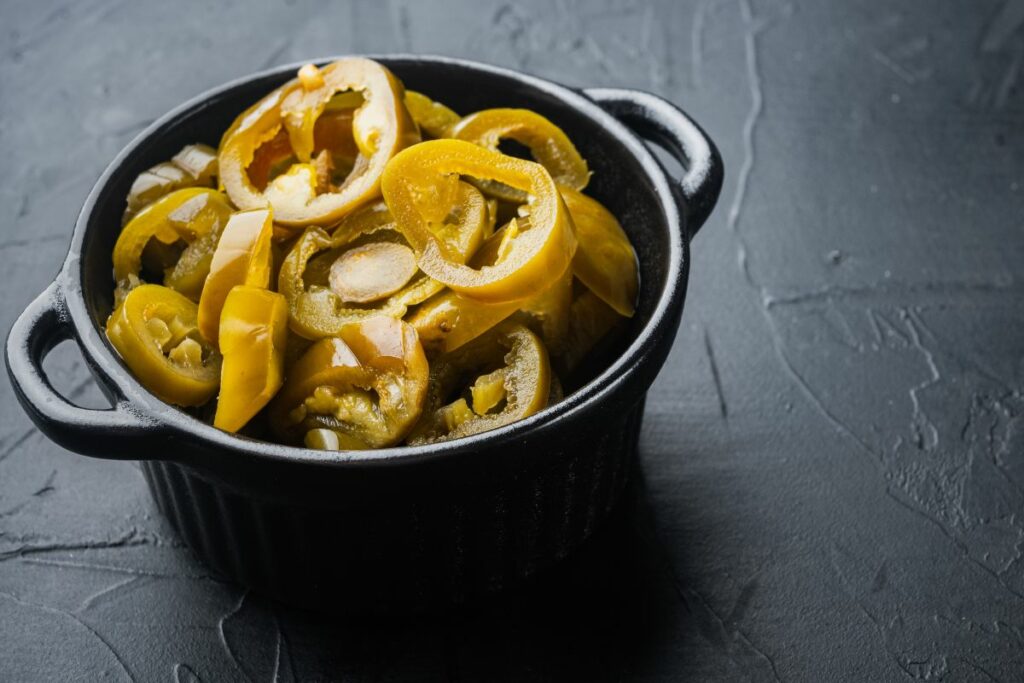
Bitterness
If you’re looking for a substitute with a bitter flavor, try using radicchio. This leafy vegetable has a slightly bitter taste and can be used in salads or as a garnish.
Ripeness
When selecting a substitute, consider the ripeness of the pepper. Red and yellow bell peppers are more ripe than green peppers and have a sweeter flavor. If you’re looking for a substitute with a similar flavor to green peppers, choose a pepper that is less ripe.
Availability
Finally, consider the availability of the substitute. While some substitutes may be available at grocery stores, others may be harder to find. If you’re having trouble finding a substitute, ask your local grocer for suggestions or try ordering online.
Tips for Handling Peppers
Peppers can add a delightful crunch and flavor to any dish. However, handling them can be tricky, especially if you’re not used to working with them. Here are some tips to help you handle peppers safely and efficiently.
Raw Peppers
When working with raw peppers, it’s essential to wash them thoroughly before slicing or dicing them. This will help remove any dirt or bacteria that may be on the skin. Once washed, pat them dry with a clean towel or paper towel.
It’s also important to wear gloves when handling hot peppers like jalapenos or habaneros. The oils in these peppers can cause a painful tingling sensation that can last for hours and can’t be washed off easily. If you don’t have gloves, make sure to wash your hands thoroughly after handling them and avoid touching your eyes or face.
Cooked Peppers
Cooked peppers are easier to handle than raw peppers. You can roast, grill, or sauté them to add flavor to your dishes. When cooking peppers, make sure to remove the stem and seeds before slicing or dicing them. This will help reduce the heat and bitterness of the pepper.
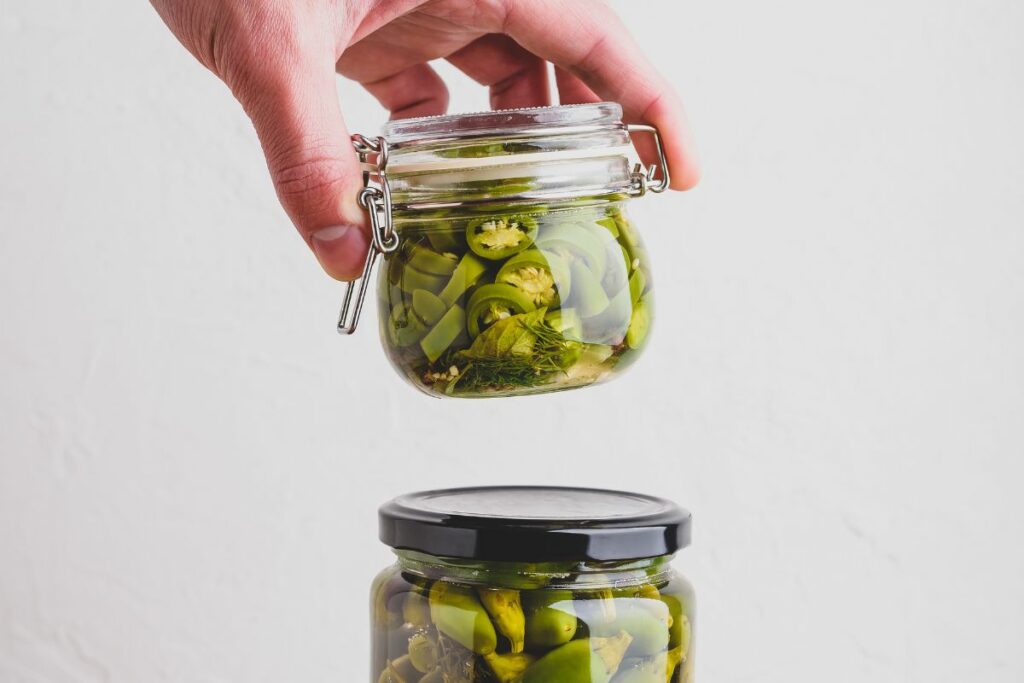
Dried Peppers
Dried peppers can add a unique flavor to your dishes. When working with dried peppers, soak them in hot water for 10-15 minutes before using them. This will help soften them and make them easier to chop or grind.
Skin Irritation
If you accidentally touch your skin with hot pepper oils, rinse the affected area with cold water immediately. Avoid using hot water as this can make the irritation worse. You can also apply a mixture of baking soda and water to the affected area to help neutralize the oils.
Eye Irritation
If you accidentally touch your eyes after handling hot peppers, rinse them with cold water immediately. You can also apply a cold compress to your eyes to help reduce the irritation. Avoid rubbing your eyes as this can make the irritation worse.
By following these tips, you can handle peppers safely and efficiently, and add a delightful crunch and flavor to your dishes.
